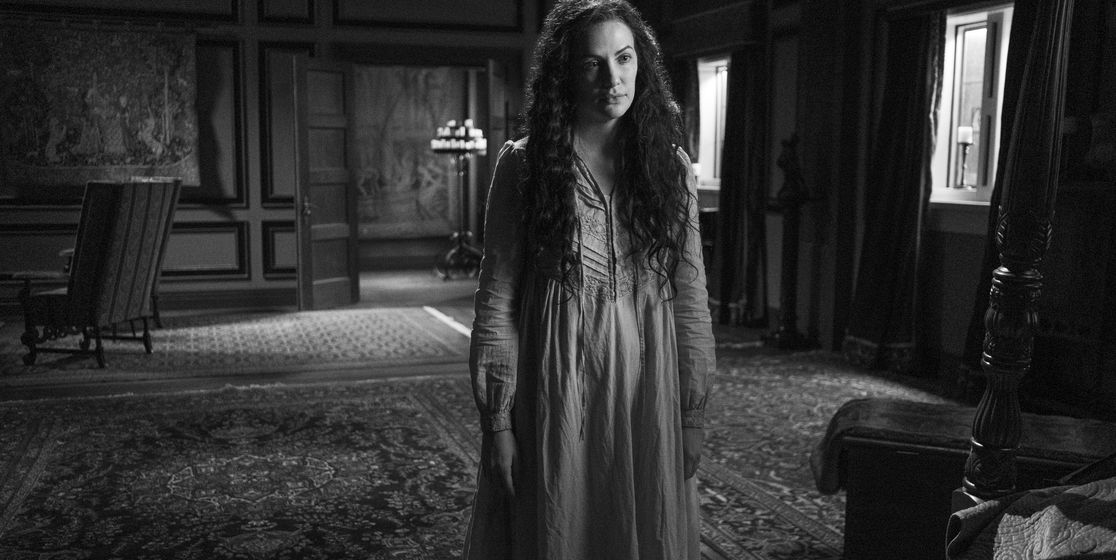Episode 8 of The Haunting of Bly Manor delves into the origin story of the haunted English estate where the series takes place, focusing on the human life of the ghostly, murderous Lady in the Lake, aka Viola Willoughby.
Viola is the older of two orphaned sisters who compete for the affections of a man in 17th-century Hampshire. The suitor in question, Arthur, chooses Viola over her younger sister, Perdita, creating a resentment which never quite goes away. But a few years into her marriage, Viola contracts a deadly illness which has her coughing up blood and ultimately leaves her bedridden.
At first, Viola and her relatives are terrified that she has the plague, which was still running rampant in England during the 17th century. But when a doctor comes to examine Viola, he confirms that she doesn’t have the plague—she has “the lung.” We’re breaking down what that all means.
How does Viola die?
When Viola’s doctor emerges from her bedroom, clad in a plague mask, he warns Perdita and Arthur that although Viola is plague-free, her prognosis is still grim. “She has the lung,” he says. Perdita is confused, trying to ask what that means (same, Perdita), but Arthur cuts her off, asking simply, “How long, doctor?” The doctor responds that Viola has “months, at the most” and says he doesn’t believe he can cure her.
The doctor also recommends that Viola be quarantined from the rest of her family, since her illness is so contagious. This devastates her—not only is she taken away from her beloved marriage bed, but more painfully, she’s separated from her young daughter Isobel. Viola’s resentment over being quarantined sparks deep rage that will define the rest of her existence, and ultimately turn her into a vengeful spirit haunting the grounds of Bly forever. But let’s not get ahead of ourselves.
The doctor’s “months at most” predictions turns out to be way off, because Viola stubbornly refuses to die, or even to acknowledge that she could. She refuses to accept the last rites from the vicar, telling him: “Tell your God that I do not go.” This isn’t the victory it appears to be, because Viola ends up existing for five years in a hellish limbo state between life and death. She’s consumed by rage and resentment at her sister and husband during this time, and finally, Perdita murders her because she’s so exhausted by her abuse.
What is “the Lung”?
We don’t get any confirmation of exactly what the doctor means by “the lung,” but based on the time period and Viola’s symptoms, the disease is probably tuberculosis, aka TB. This lung disease was common in the 17th century, and wasn’t easily treatable, so the doctor’s bleak prognosis makes sense. TB crops up a lot in pop culture under different names—it’s the same thing as consumption, the disease that killed Nicole Kidman in Moulin Rouge.
TB peaked as an epidemic in the U.K. in the 17th century, the same time this episode takes place. By the middle of the century, one in five deaths in the city of London was due to the disease. But there were cases of people surviving, so Viola living for as long as she did isn’t implausible.
While being quarantined because of a contagious and deadly lung disease may feel just a little too real in 2020, the good news is that the history of TB is a reminder of the power of modern medicine. The disease is still around today—in fact, it’s the leading infectious cause of death worldwide—but thanks to a combination of vaccinations and effective treatments, it’s now widely controlled and curable. Just another reason to love science!
This content is created and maintained by a third party, and imported onto this page to help users provide their email addresses. You may be able to find more information about this and similar content at piano.io
